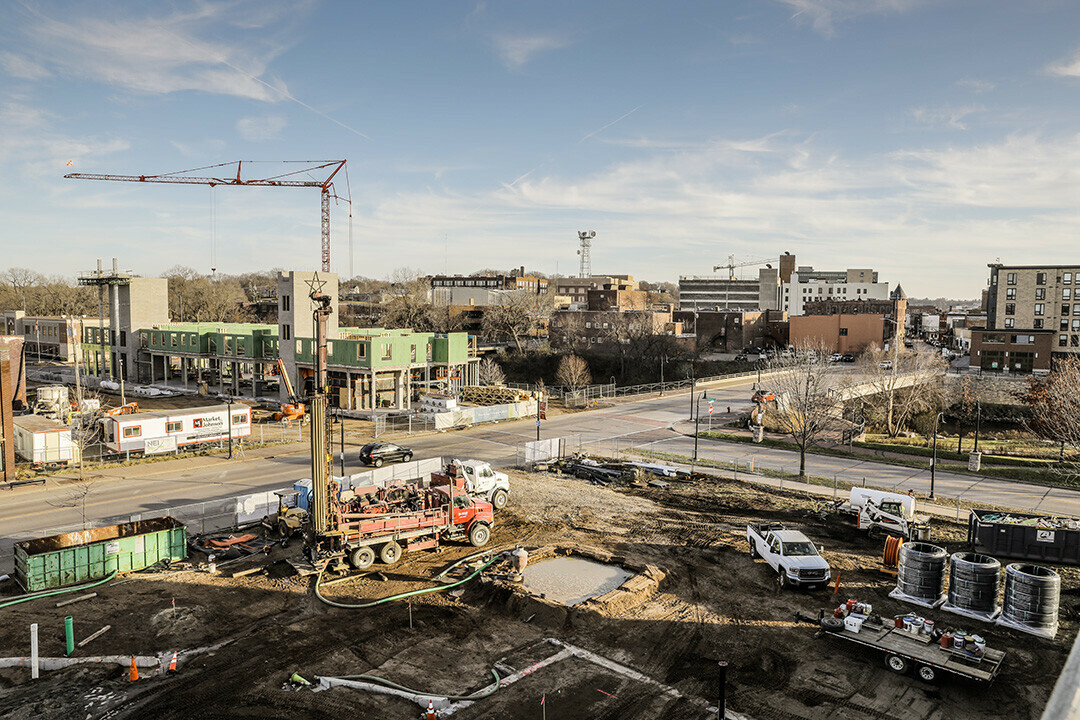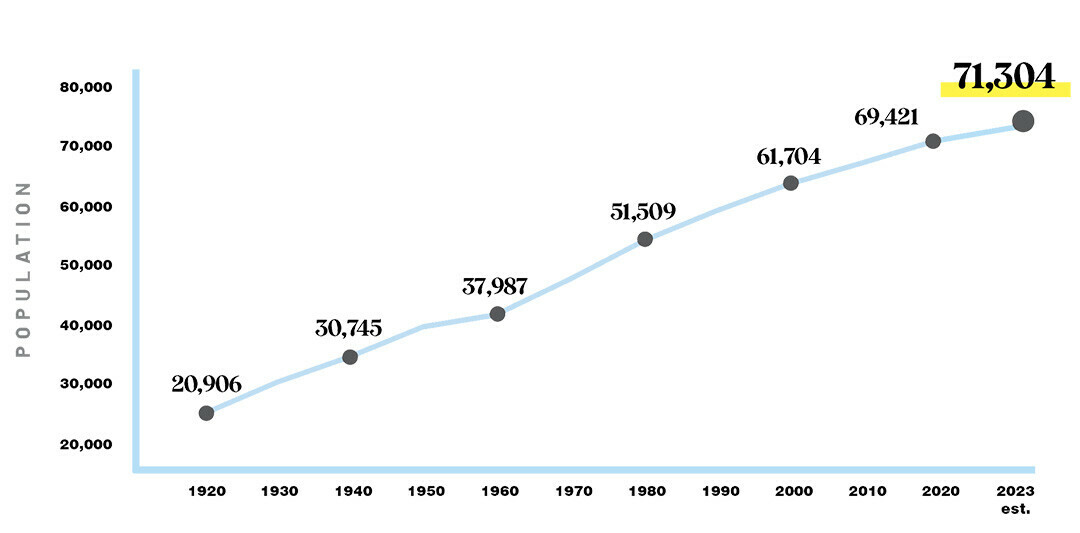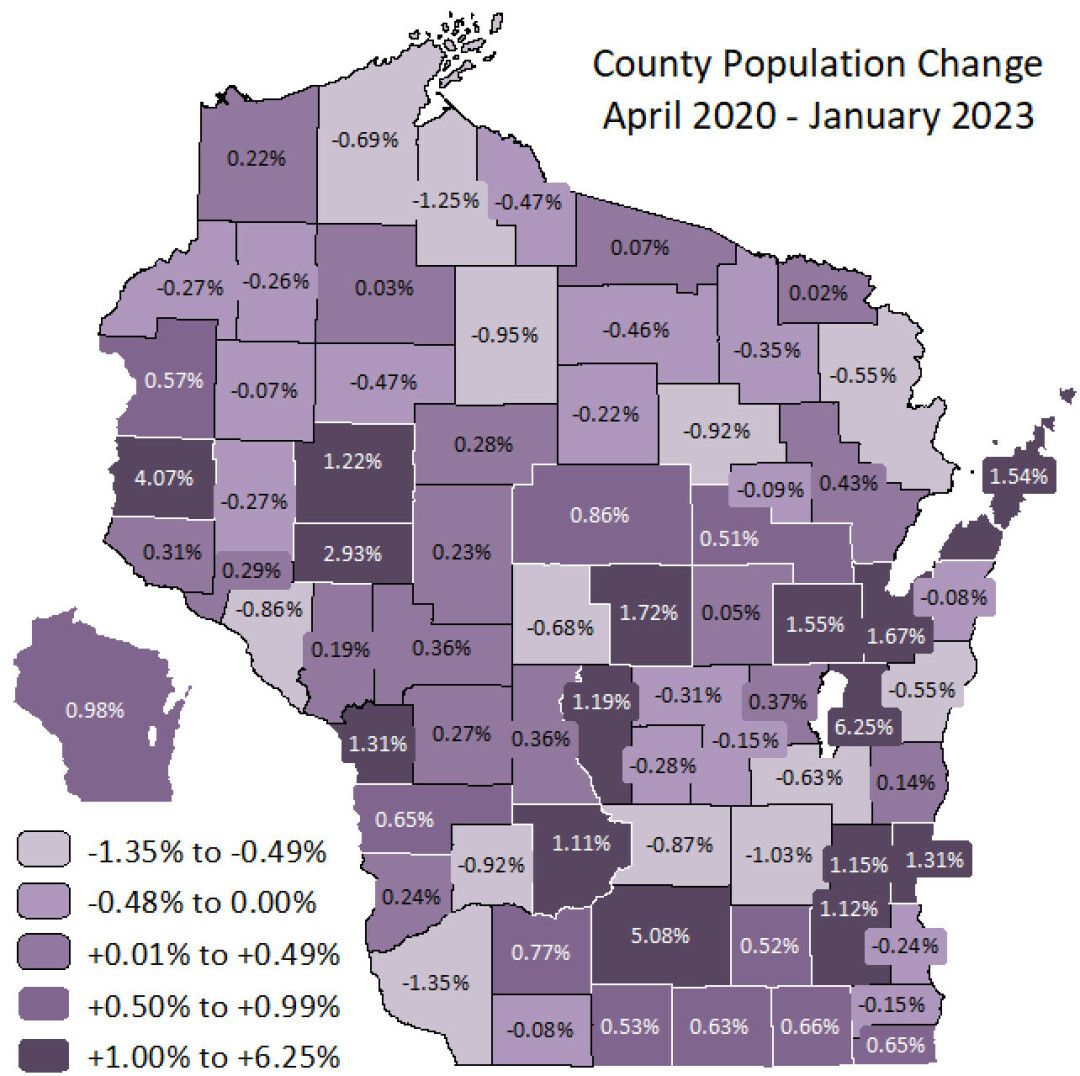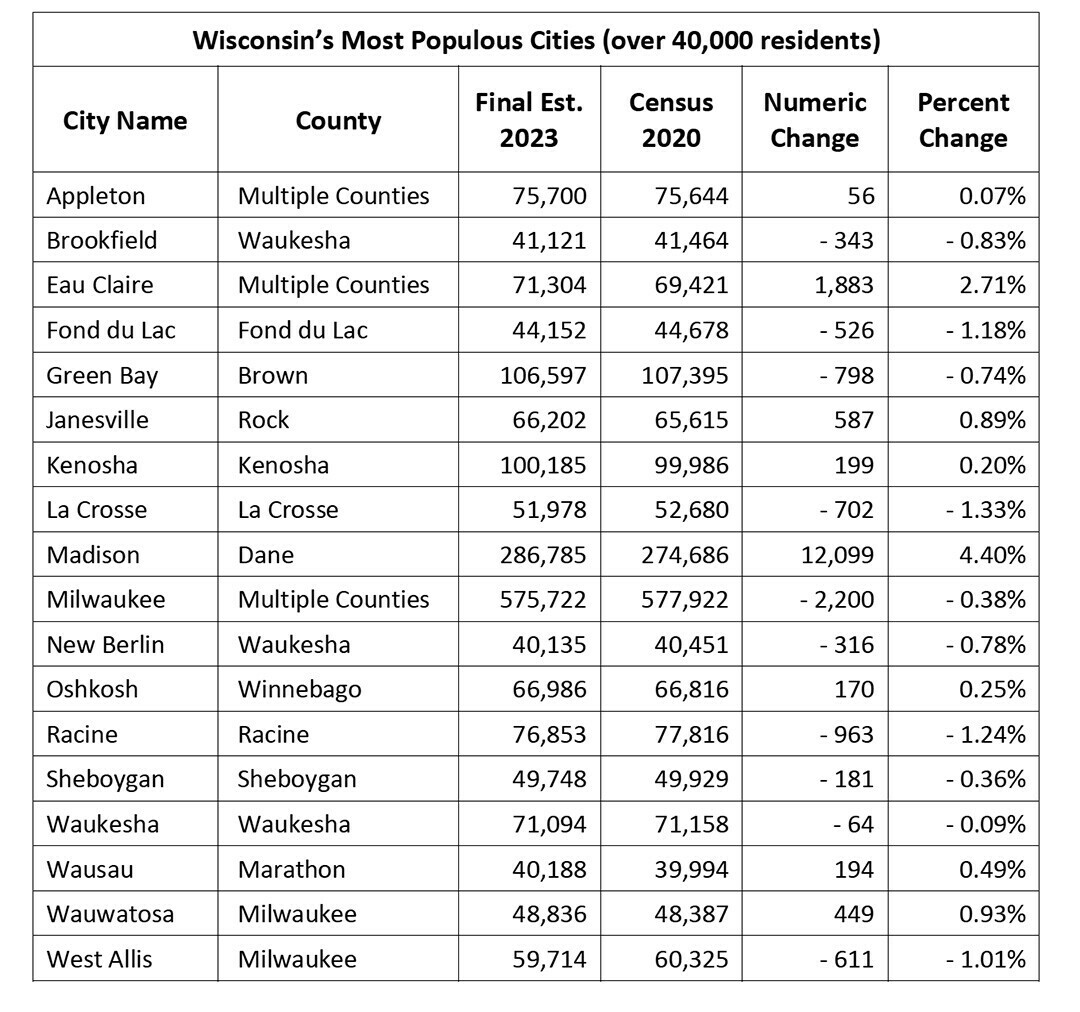Eau Claire Population Shoots into Seventh Place in State
city surpasses 70,000 residents for the first time, according to estimate
Tom Giffey, photos by Andrea Paulseth |

Just two years after officially becoming Wisconsin’s eighth-largest city, Eau Claire’s growth has once again propelled it forward in the population rankings.
According to recently released population estimates from the state Department of Administration, as of Jan. 1, 2023, Eau Claire was the seventh-largest city in Wisconsin, passing up Waukesha by a few hundred residents.
In addition, for the first time ever the City of Eau Claire’s population exceeded the 70,000 mark, growing to an estimated 71,304 residents. That’s nearly 1,900 more than were counted in the 2020 federal census. By comparison, Waukesha was estimated to have lost a handful of residents, declining to a population of 71,094.
Eau Claire had also grown by 3,538 people between the 2010 and 2020 censuses, figures that vaulted it over Oshkosh to become No. 8 in the state when the census figures were released in 2021.

Eau Claire’s latest estimated growth amounts to a 2.7% increase in population over the past three years, making it the second fastest-growing large city in the state, behind only Madison, which grew an estimated 4.4% between 2020 and 2023.
According to the new statistics, there are 18 cities in Wisconsin with a population higher than 40,000. Of these, 10 lost population between 2020 and 2023, the DOA estimated. The largest numerical drop came in Milwaukee, which lost an estimated 2,200 residents in the three-year period, while the biggest percentage drop happened in La Crosse, which lost an estimated 1.3% of its population, or about 702 residents.

And Eau Claire isn’t the only community in the Chippewa Valley that’s booming. The City of Altoona gained an estimated 1,027 people between 2020 and 2023, a jump of more than 12% to 9,320 people. That was the seventh-fastest rate of growth among all 1,851 cities, towns, and villages in Wisconsin, according to the Department of Administration.
On the whole, the state’s population grew an estimated 1% between 2020 and 2023 to 5,951,400.
Below is a chart from the DOA report showing the most populated cities in Wisconsin as of Jan. 1, 2023:

To explore the Wisconsin population estimate data further, visit the Wisconsin Department of Administration website.


















